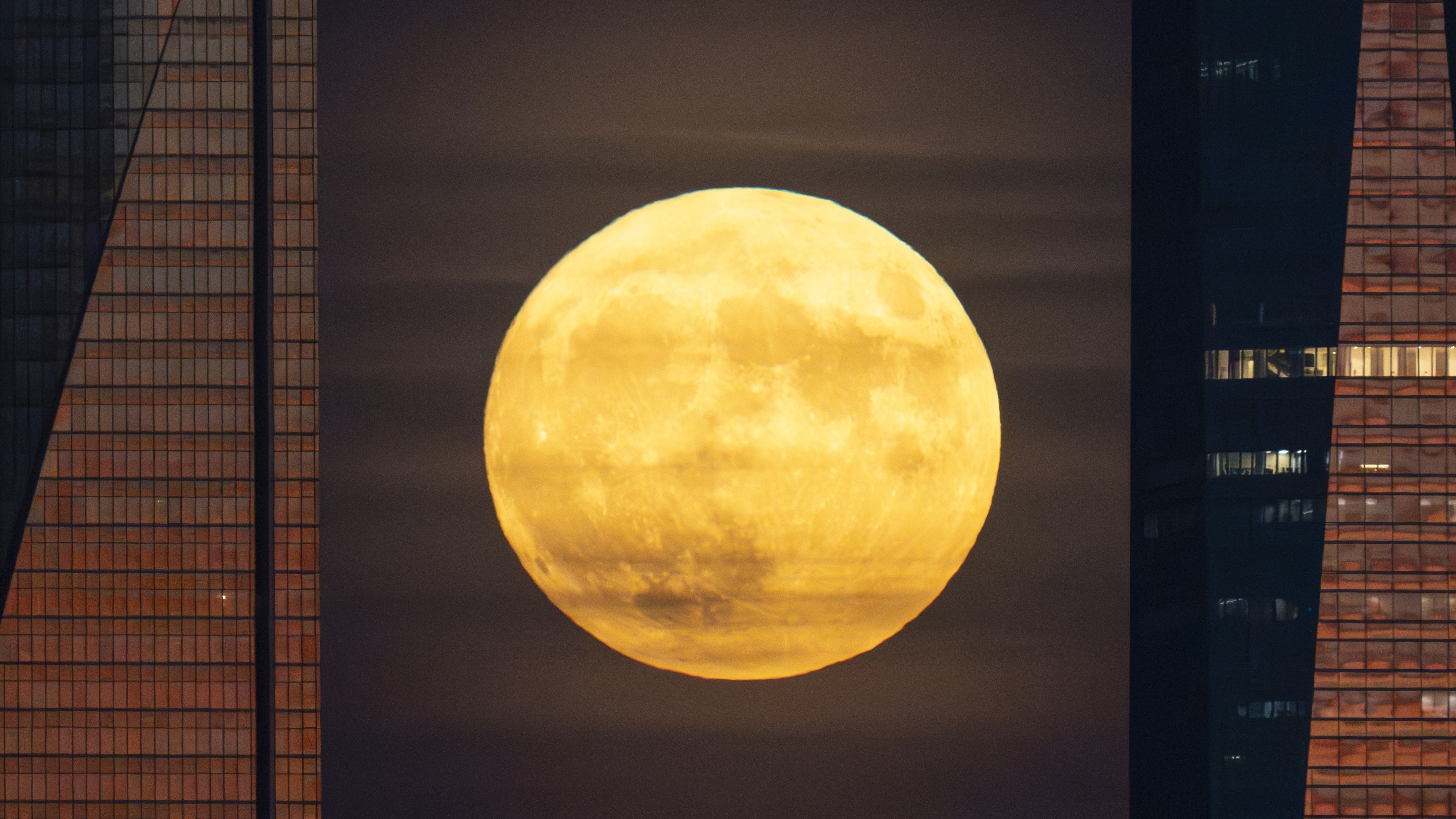Why is a 'once-in-a-decade' Supermoon Blue Moon happening twice in 2 years?
A 'once in a blue moon' event might not be as infrequent as you think.

Just exactly when is the next Supermoon Blue Moon?
As we ready ourselves for the Supermoon Blue Moon on Monday, Aug. 19 where it officially becomes 100% full at 2:26 p.m. EDT (1826 GMT). Some of you eagle-eyed readers might be asking "Wait a minute, during last year's Supermoon Blue Moon you said the next Supermoon Blue Moon was in 2037, thus making it a once-in-a-decade event?" And you'd be right, well sort of… it's complicated.
The term "Blue Moon" actually has two meanings so they're not quite as rare as you might think, so much for "once in a blue moon," right?
A seasonal Blue Moon is the traditional definition of a Blue Moon and refers to the third full moon in a season that has four full moons according to NASA. The second definition — which arose from a misunderstanding of the original — is the monthly Blue Moon, referring to the second full moon in a single calendar month. Today, this monthly Blue Moon is accepted as an alternative definition rather than a mistake, according to Time and Date.
A supermoon is more common and simply refers to any full moon that occurs when the moon is within 90% of its closest approach to Earth, according to NASA. There will be four supermoons in a row this year: Aug. 19, Sept. 17, Oct. 17, and Nov. 15. The closest supermoon of 2024 will occur on Oct. 17 at 7:26 a.m. EDT (11:26 a.m. GMT).
So the next Supermoon Blue Moon according to the monthly Blue Moon definition will indeed occur on Jan. 31, 2037, at 10:03 a.m. EST (1403 GMT.)
But the next Supermoon Blue Moon according to the seasonal Blue Moon definition will occur on Aug. 19, 2024, at 2:26 p.m. EDT (1826 GMT). After that, we won't see another Supermoon Blue Moon (under the seasonal definition) until Aug. 20, 2032.
After Monday's full moon, we'll need to wait a least 8 years for the next Supermoon Blue Moon, so if you can, try and get out and see it shine! The moon will still appear full on the nights before and after Aug. 19.
Breaking space news, the latest updates on rocket launches, skywatching events and more!
Our moon viewing guide can tell you everything you need to know about observing our lunar companion and our Apollo landing sites guide will help you find where astronauts, rovers and landers have stepped onto another world.

Daisy Dobrijevic joined Space.com in February 2022 having previously worked for our sister publication All About Space magazine as a staff writer. Before joining us, Daisy completed an editorial internship with the BBC Sky at Night Magazine and worked at the National Space Centre in Leicester, U.K., where she enjoyed communicating space science to the public. In 2021, Daisy completed a PhD in plant physiology and also holds a Master's in Environmental Science, she is currently based in Nottingham, U.K. Daisy is passionate about all things space, with a penchant for solar activity and space weather. She has a strong interest in astrotourism and loves nothing more than a good northern lights chase!
